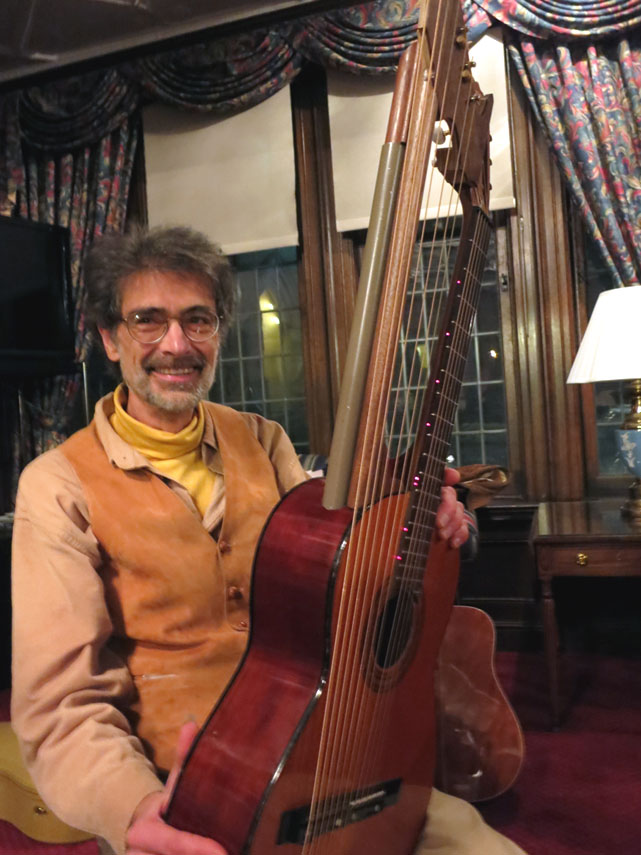 Kinloch does it again!
Kinloch does it again!
Readers may remember the first harp guitar at left that professional guitarist-turned-harp guitarist Kinloch Nelson cobbled together out of a trash can nylon string. He basically Macgyvered it into a great-sounding steel-string, played at many of the Harp Guitar Gatherings over the years, and blogged here 9 years ago.
Then, recently, Kinloch was offered a deal on a Jim Worland-built Dyer (below), one from a period I knew well (I had recommended the previous owner snap it up when it came up used and urged Kinloch as well).
He really debated, as he really wanted a custom 7-bass instrument, along with a cutaway.
But he liked the neck and sound, so took a chance that he could somehow add that 7th sub.

Clever boy. I can’t wait to see how he pulls off a “reversible” cutaway!
Photos and article by Kinloch Nelson:
So I finally bought a harp guitar. It sounds terrific. The one I built before was a riot to build and tweak and learn on, but a better and affordable instrument finally appeared. The problem is it only has six sub bass strings and I am accustomed to seven. So the question became: how to install another string without drilling any holes?

Where there’s a will there’s a way. I built an extension to the headstock (in this case a Dyer style paddle shaped headstock). It is held in place by a thin metal plate mounted with small screws on the back of the extension, and also held in place by the tuner itself. On the paddle head side only the tuners anchor the plate. There are no screws. The tug of the string also holds the extension against the side of the paddle head. It’s stable due to the strength of the plate and the direction of string force. The extension is laminated and not likely to crack. Plus I superglued the wood all around the peg hole of the extension.







In order to avoid drilling a seventh string hole in the bridge (which would have gone right through the bracing) I installed an aluminum plate using the string holes for the plate mount bolts. The strings, including the extra 7th string attach to pins in the plate.
Both mounting plates got a coat of black paint. I’ll probably reduce the size of the pin-plate on the bridge next time I change bass strings. I wasn’t sure where the pins would end up so it is a bit oversized. One of the pins is a bit tall due to anticipating use of a large 7th string with an oversized string end-button (like you would find on an electric bass string.)


Voila! A 7th string that can be removed and it won’t have left a trace. And the extension fits in the case! Now, where was that song I was working on…?







Bravo Kinloch! A machine designer as well as a fabulous player.